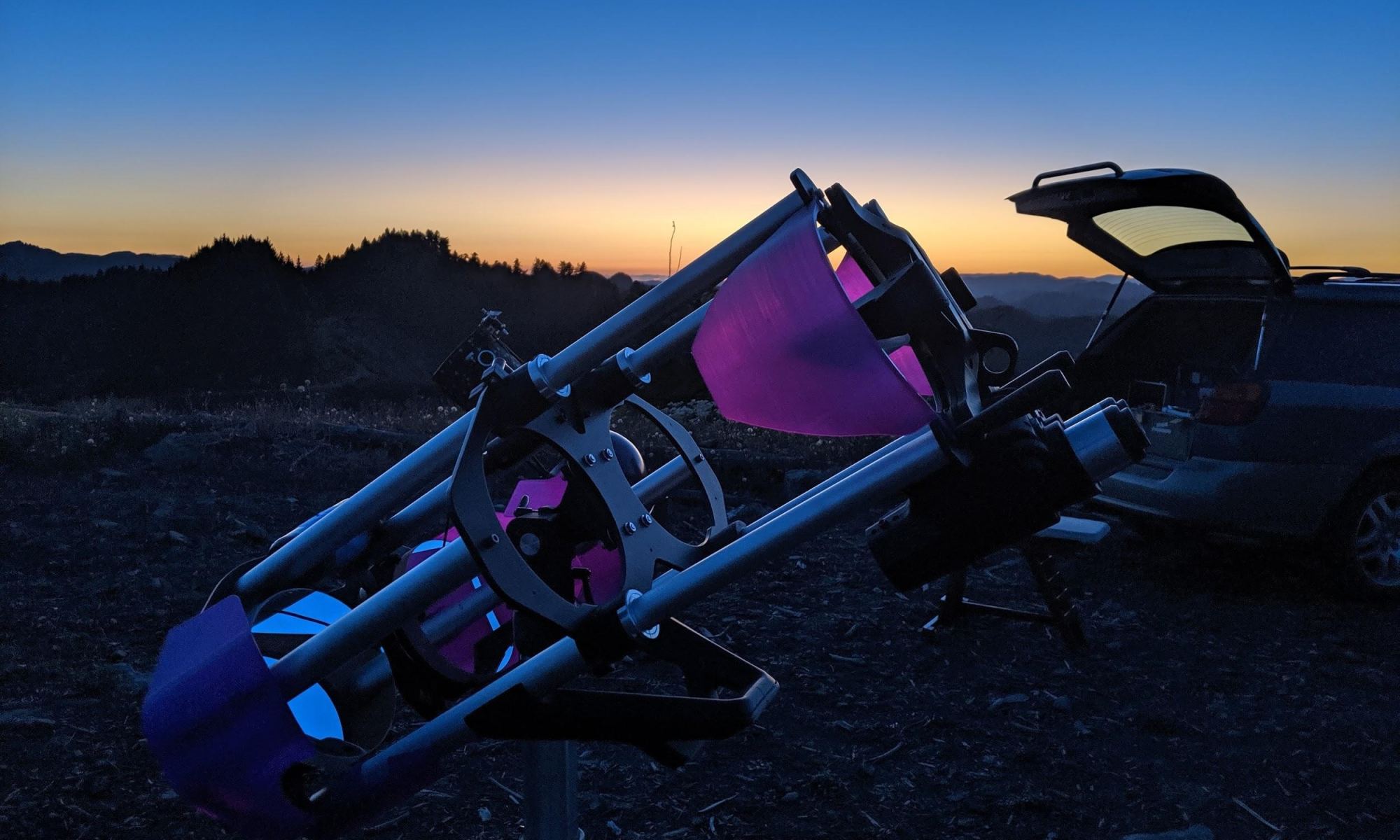A unique 3d printed telescope named the Analog Sky Drifter may spark a revolution in amateur telescope making.
In past years, the price of serious backyard telescopes has dropped considerably. Back until the 1960s, a 6-inch aperture Newtonian was a ‘big scope,’ and the only option to gain access to something larger was to build it yourself. But the advent of two innovations that came on the scene in the 1970s—the Dobsonian mount and the Schmidt-Cassegrain reflector—put serious optics in the hands of backyard observers.
Now 3D printing technology may just bring things around full circle. So, why build a telescope today? Often, constructing your own telescope can give you those one of a kind features that aren’t available on mass-produced telescopes.

In the case of Robert Asumendi, his quest began with looking for a telescope that addressed his severe astigmatism. The result: The Analog Sky Drifter, a unique binocular telescope constructed almost entirely of 3D-printed parts.
Guiding people to the eyepiece in the dark is always a continual challenge at star parties. We’ve found that, after over a half century of observing, reduced night vision, ‘floaters,’ and an overall aging of our ‘Mk-1 eyeballs’ have also taken their toll. Binoculars do add a more comfortable ‘trueview’ way to enjoy the sky… but they bring their own challenges, including diopter spacing (the distance between the pupils of the eyes is slightly different for everyone) individual focusing for each eye, and more.
Robert’s innovation addresses these, with brilliant results. And he didn’t even start with a workshop; he outsourced the designs on 3DHubs at first, before getting his own 3D printer. And heck, the design just looks futuristic, as well.
We caught up with Robert recently, and asked him to explain some of the finer design points to the Analog Sky Drifter:
Universe Today-What inspired you to 3D print parts for your telescope design?
Robert – “3D printing allows you to imagine something entirely new and hold it in your hands a few hours later. I found there were no existing off-the-shelf telescope parts to meet my design goals and discovered the geometry of some of those parts would be really challenging and expensive to machine. Woodworking, machining, and other traditional telescope manufacturing processes were not in my skill set, my garage, or really even appropriate for the task. As someone with a graphic design background and some experience in 3D modeling, I realized the only thing standing between me and the giant space binoculars I dreamed of was learning a CAD program and the 3D printing ropes.”
Note- the design uses a tertiary or three mirror system. This isn’t seen often in modern telescopes, but was once employed in older Nasmyth focus designs in the 19th century. The key advantage with this system is that it keeps the eyepiece level through one axis of the telescope, versus a traditional Newtonian, which often puts the eyepiece high up when viewing at the zenith.
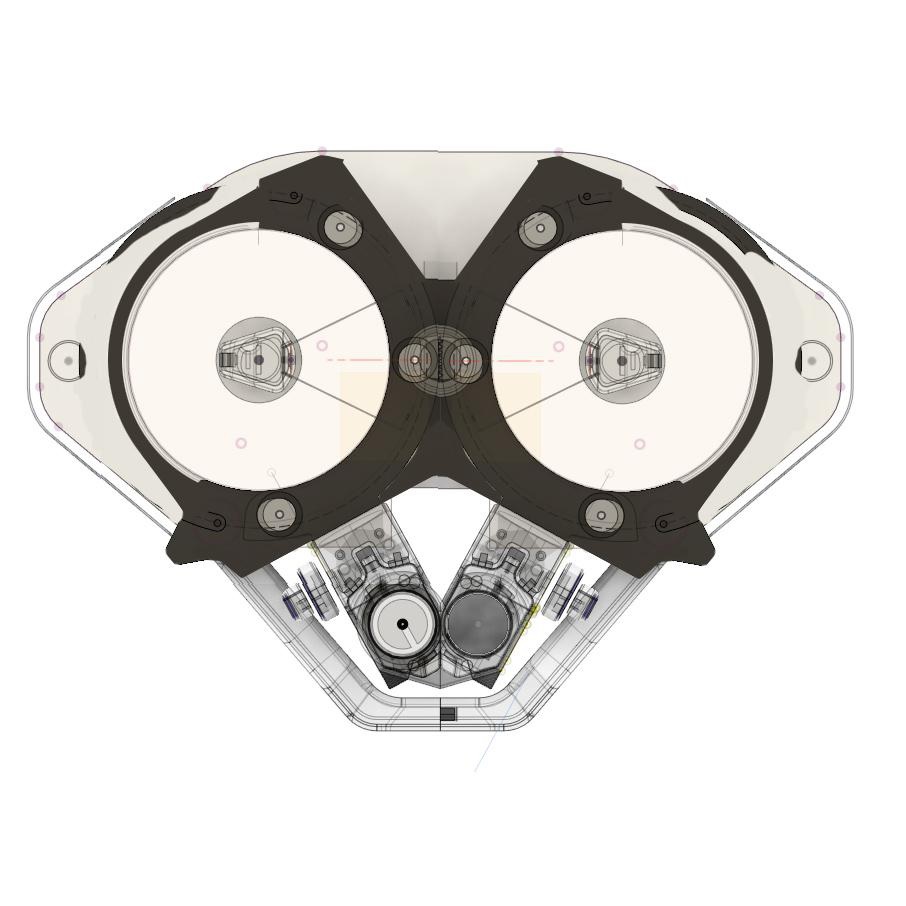
“The other thing for binoculars–a major factor in why you don’t see these commercially–is that you have a mirror-image left and right side for many components. So it’s more expensive to produce traditionally; twice the molds, twice the tooling, etc. With 3D printing, you just click the “mirror” button and print the other side. 3D printing has allowed me to both imagine new parts and keep iterating the design, sometimes dozens of times until it works really well. It’s an exciting tool that will enable a whole new generation of telescope builders.”
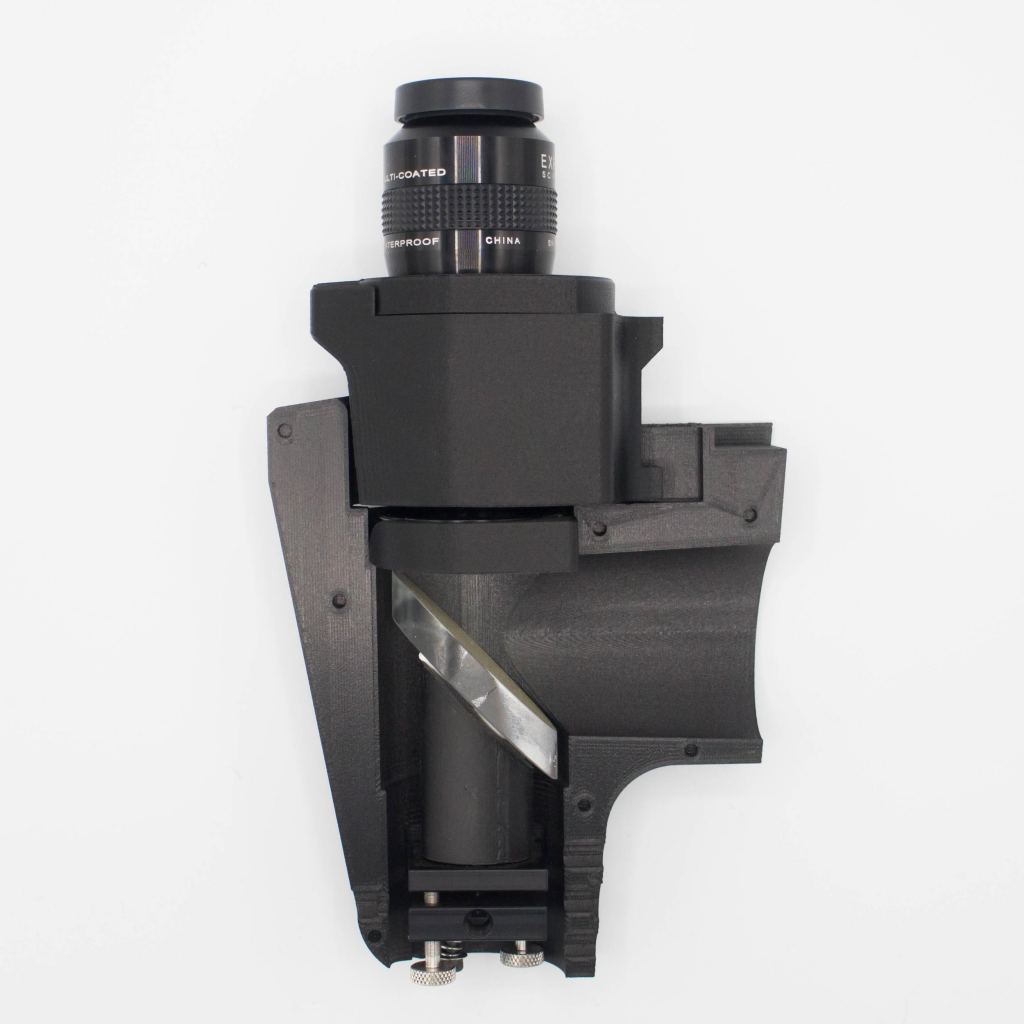
Universe Today: What were the biggest design challenges that you had to overcome?
Robert: “Besides none of the parts already existing? Keeping six mirrors perfectly aligned from horizon to zenith is a more complicated dance than the usual two, especially since the scope collapses in half to save space for transportation and storage. Balancing factors like stiffness, durability, lightweight, manufacturability, and user interaction while maintaining that alignment is a tug-of-war. Then giving people the ability to touch up the alignment without rage-quitting is something no one had really addressed 100%.”
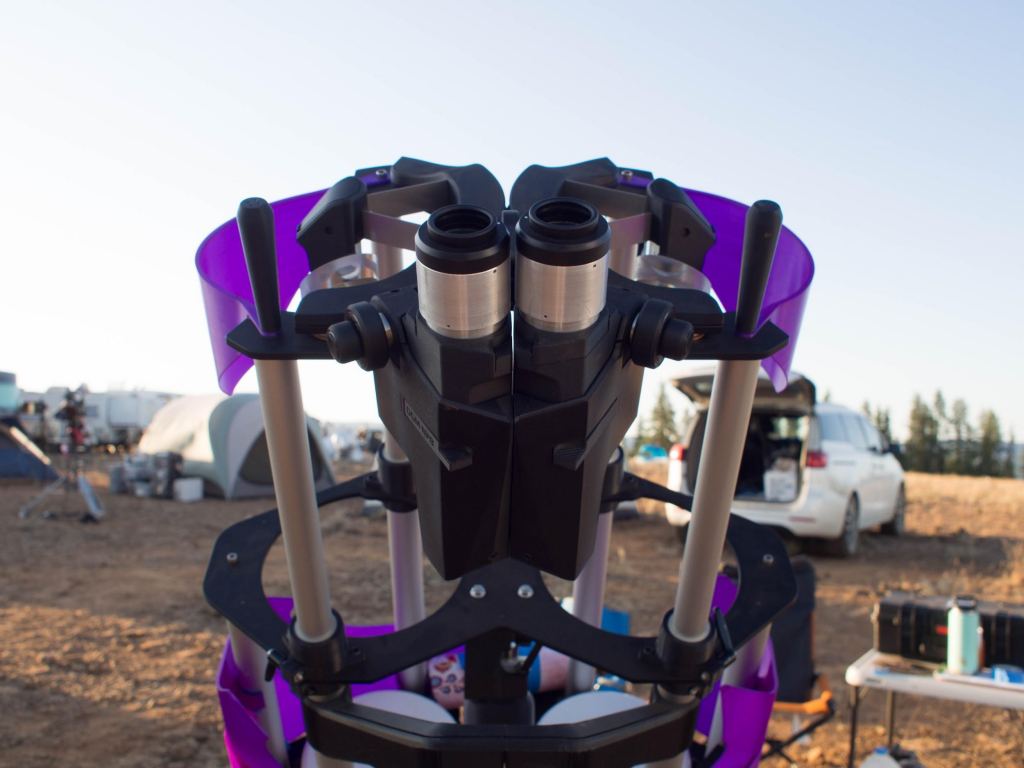
Universe Today: How does the Analog Sky Drifter differ from standard ‘bino-scopes’ of the past?
Robert: “The headline feature is the instant eyepiece and filter swapping. Neodymium magnets turn a 3-5 minute chore into a 10-15 second non-issue. With binoculars, you have to do everything twice, so every task needs to be fast and painless. This leads to a really joyful stargazing experience where the tool disappears and you’re just exploring.
The 8” f/5 primary mirrors mean we are collecting enough light to really enjoy deep space objects, but adding 2” eyepieces means getting all that light in a wide 2+ degree field. So these wide and bright views through two eyes are incredibly unique to a handful of scopes that have ever existed.
Really though, the Drifter’s biggest breakthrough is the ability to share the views. This scope is an outreach beast. I have two young kids and love doing public star parties, so I really wanted to be able to share these views with everybody. Different people have different PD (pupil distance) between your eyes. With handheld binoculars everyone knows you just pull the eyepieces apart to fit your head, but this hasn’t been the case with binoscopes. There’s usually a fiddly set of knobs nobody understands in the dark, and then this changes the focus so you have to refocus for each person. Then people grab the eyepieces and try to move them anyhow, which throws the alignment out and the scope is down for half an hour. Look, people want to grab the eyepieces and move them, so let’s make that the way we adjust PD.
I’ve had the Drifter set up at star parties where fifty people cycled through the scope one after the other and everyone was able to get a sharp, beautiful view with minimal or no instructions.”
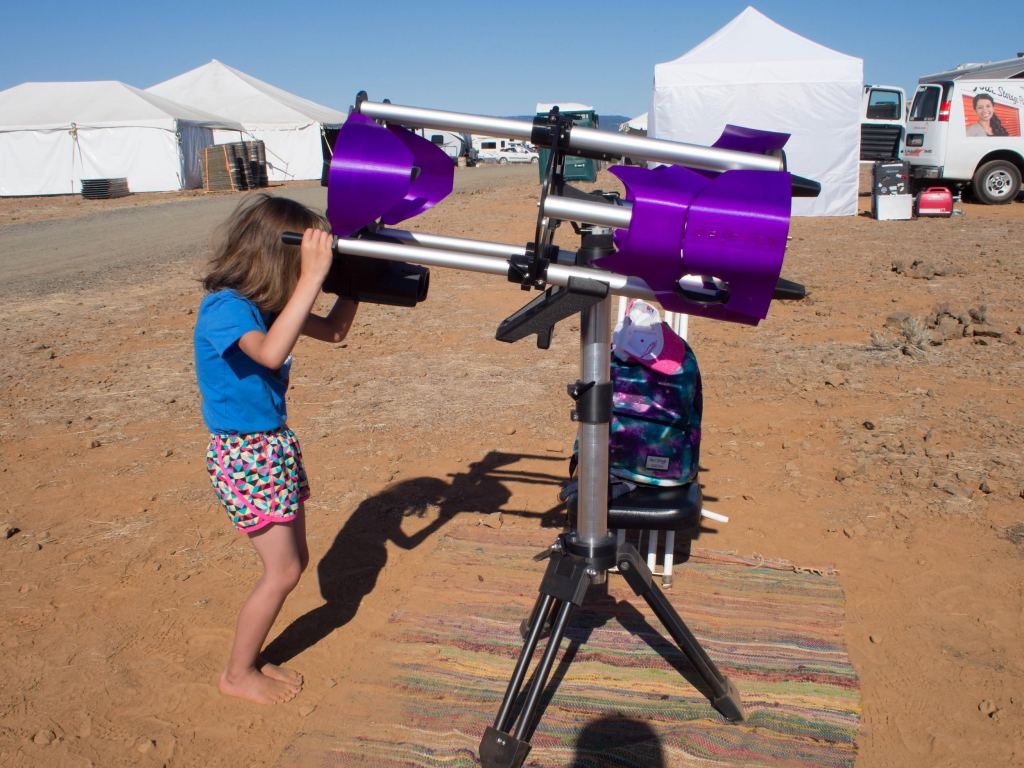
Universe Today: How well does the Analog Sky Drifter work out in the field?
Robert: “It’s pretty amazing to setup a scope equivalent to a 12-14” truss Dobsonian in 60 seconds. Busy dad lifestyle, check.
It’s pretty amazing to get a “Wow” (or muttered curse) from amateur astronomers and telescope makers with 30, 40, 50 years of observation under their belts. Totally new way to look at the sky, check.
It’s also gratifying when people with vision problems like macular degeneration, astigmatism, or just extreme myopia look through the Drifter and say things like, “Wow, I’ve never been able to see anything like this through one eye” or “I was thinking of quitting astronomy because my vision has gotten so bad but this gives me hope.” The true advantage of binocular vision is the image processing power of your brain. Accessibility, check.
The thing people love about binocular astronomy is this: You look up at the night sky with your naked eyes, think “I wonder what’s over there?” or “How’s the Double Cluster look tonight?” and then you just hold up the binos and stare at that spot with both eyes wide open to the gentle rain of ancient photons. It’s the most direct connection to the cosmos. The Drifter extends that same experience from 30x past 200x with serious aperture.
So it invites stargazers back to a relationship with the sky that feels more like exploring. For me, as a 38-year-old, the best analogy is the way the world map from Nintendo’s Legend of Zelda was etched forever into my brain: Through free-form exploration, no prompts, creating my own familiar routes, elective challenges, seeking hidden treasures, always with a feeling of adventure and delight. Looking at the night sky is just a lot more fun that way than scrolling through targets on a hand controller. The map above all our heads is part of our shared humanity, and everyone should get to know it as well as they can. The Drifter makes a great companion.”
Universe Today: How is the crowdfunding campaign coming along?
Robert: “The campaign is still under development! The funds will build up high-quality 3D printing capacity, set up an actual manufacturing space, test more accessory configurations, and put in wholesale orders for a couple hundred mirrors. It will also discover a brave crew of 10 beta testers who want to help steer us toward the final production spec. The goal is to launch toward the end of October, so there is a mailing list to keep people updated (a Kickstarter campaign is also in the works) Analog Sky is on Instagram, Facebook, and Twitter in addition to the development blog.”
An amazing design, for sure. I can’t wait to get a first look through an Analog Sky Drifter in the field, perhaps coming soon to a star party near you.

